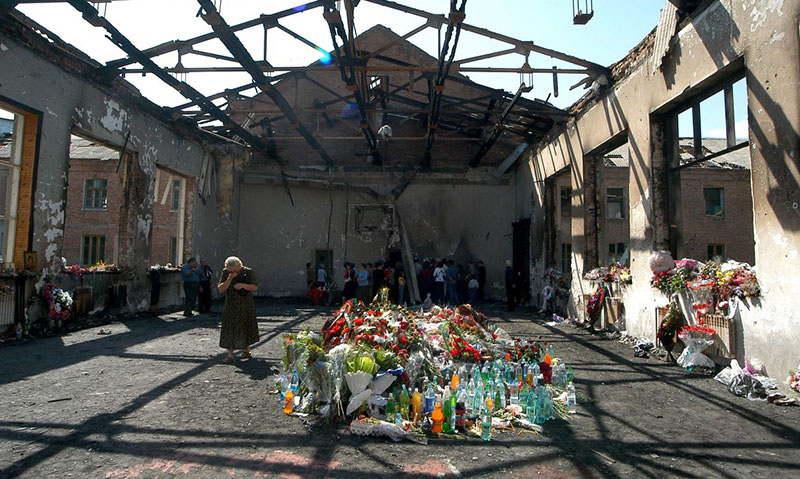
On 13 April 2017, the First Section of the European Court of Human Rights found that Russia had violated Article 2 of the European Convention on Human Rights (the right to life) by failing to take adequate action to prevent the 2004 Beslan school siege in which 330 people lost their lives and over 750 people were injured. It also found that the Russian State forces’ use of excessive force in the rescue operation contributed to the high casualties among the hostages.
In September 2004, 30 Chechen militants took more than 1,000 hostages in a school in Beslan, demanding that Russia leave Chechnya. In ending the siege, Russian State forces used a number of powerful explosives and weapons against school buildings where hostages were present alongside the Chechen militants.
The Court found that, despite the intelligence services having specific information of a planned terrorist attack linked to an educational institution in the area, the Russian authorities failed to: disrupt the terrorists meeting and preparing; take sufficient steps to prevent the terrorists travelling on the day of the attack; increase security at the school; and warn both the school and the public.
The Court also found that the security operation to end the siege had serious shortcomings. No fire engine was at the scene when the raid occurred, and the use of tanks, grenade launchers and flame-throwers to end the hostage situation amounted to an excessive use of lethal force.
Additionally, the Court found that the investigations following the victims’ death were inadequate because investigators did not examine the hostages’ bodies forensically, let alone locate them. This meant that the exact cause of death still remains unestablished for a third of the victims.
The Court found that Russia had violated Article 2 of the European Convention on Human Rights (the right to life) and ordered it to pay approximately €3 million to the surviving victims and family members of the dead victims. Russia has indicated that it intends to request referral of the case to the Grand Chamber.
For the Court’s judgment, click here.
